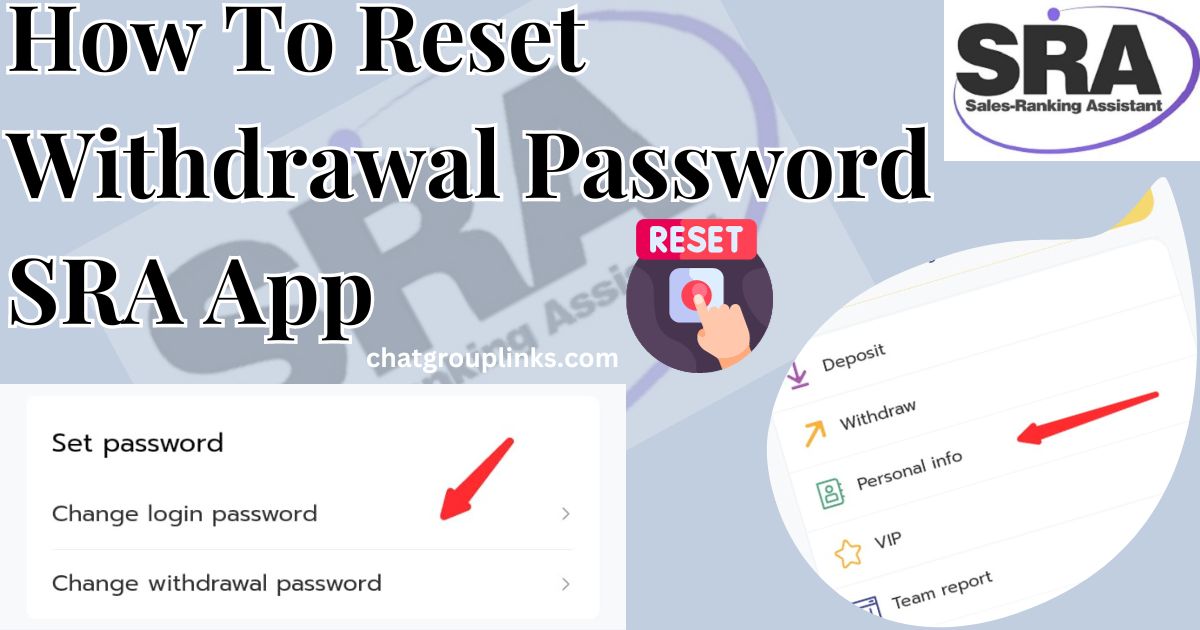In today’s digital age, security is paramount, especially when it comes to your financial information.The SRA App is a powerful tool for managing your finances, but what happens when you need to reset your withdrawal password?
In this guide, i will walk you through the process step by step, How To Reset Withdrawal Password SRA App ensuring that your financial data remains safe and accessible.
1. Prerequisites
Before we dive into the process of resetting your withdrawal password, you’ll need to ensure you have the following in place:
- Access to the SRA App: Make sure the app is installed on your device.
- Knowledge of Current Password: You should know your current withdrawal password.
- Internet Connection: Ensure you have a stable internet connection to complete the process.
- Valid Email Address: A working email address associated with your SRA App account is crucial for verification.
2. Steps to Reset Withdrawal Password in SRA App

A. Launch the SRA App
- Begin by opening the SRA App on your device. Locate the app icon and tap to launch it.
B. Navigate to the “Account” or “Profile” Section
- Once you’re in the app, navigate to the “Account” or “Profile” section. This is typically where you’ll find account-related settings.

C. Select “Change Password” or “Reset Password”
- Within the account settings, look for the option labeled “Change Password” or “Reset Password.” Tap on it to initiate the process.
D. Verify Your Identity
- To ensure security, you’ll be prompted to enter your current withdrawal password.
- Some apps may require you to provide additional information such as answers to security questions.
E. Request a Password Reset
- After verifying your identity, you should see an option to request a password reset. Choose this option.
F. Receive a Verification Email
- Check your registered email inbox. You should receive an email from the SRA App with instructions for resetting your password.
G. Click the Verification Link
- Open the email and click on the provided verification link. This will confirm your identity and allow you to proceed.
H. Create a New Withdrawal Password
- Once you’ve clicked the link, you’ll be directed to a page where you can create a new withdrawal password. Ensure it’s strong and unique.
I. Confirm the New Password
- Re-enter the new password to confirm it’s correctly entered.
J. Save Changes
- Finally, click the “Save” or “Update” button to apply your new withdrawal password.
K. Log In with the New Password
- Return to the SRA App’s login page and use the new withdrawal password to access your account.
if you earn mony throw SRA app click here
3. Troubleshooting
A. If you don’t receive the verification email
- Check your spam or junk folders.
- If it’s not there, you can request a resend through the app if necessary.
B. If you forget your current withdrawal password
- Follow the app’s password recovery or reset process, which may involve contacting customer support.
C. Contact Customer Support
- If you encounter issues beyond your control, don’t hesitate to reach out to the app’s customer support for assistance.
4. Best Practices
- Regularly update your withdrawal password: Changing your password periodically enhances security.
- Use a strong and unique password: Incorporate a mix of uppercase and lowercase letters, numbers, and special characters.
- Enable two-factor authentication if available: An extra layer of security can be invaluable.
Conclusion
In conclusion, knowing how to reset your withdrawal password on the SRA App is essential for safeguarding your financial information. By following these steps and best practices, you can maintain the security of your account while ensuring accessibility when needed. Stay safe, and enjoy the convenience of managing your finances with confidence.
This article is structured to be SEO-friendly by including relevant keywords and providing valuable information. Remember to optimize it further by using appropriate meta tags, headings, and internal/external links for better search engine visibility.

